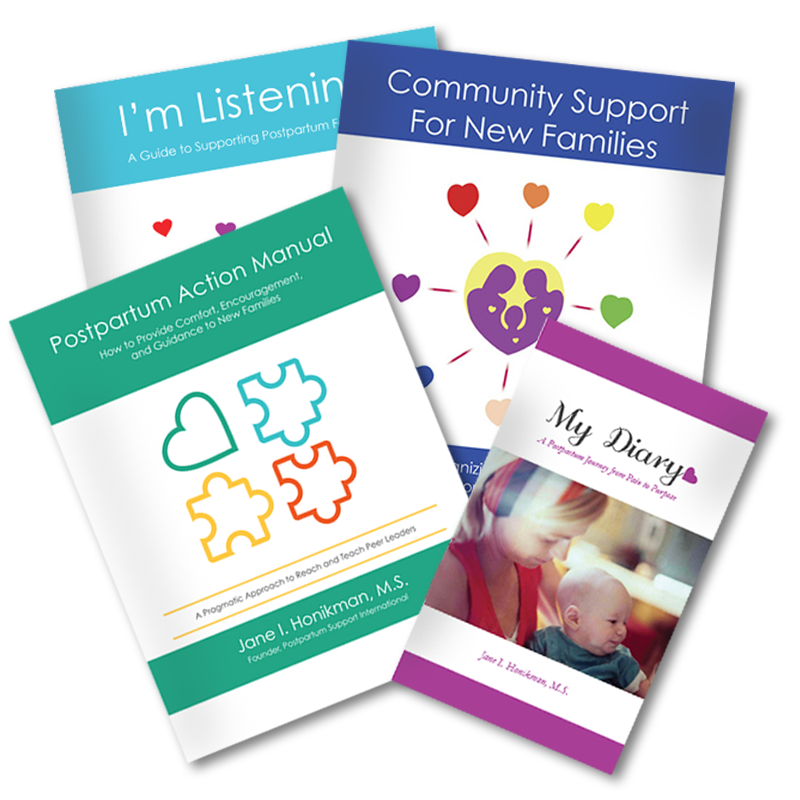Starting a Support Network
▶ How do I learn more about starting a support network?
You can learn more from Community Support for New Families, my step-by-step workbook to developing a Postpartum Parent Support Network in your community. Order it here.
▶ How do I provide training and orientation to volunteers/staff?
Decide whether or not your group’s training procedure will be designed by your group, use existing community training, or be brought in from outside organizations. Decide whether you will need separate training for staff and volunteers.
▶ How do I seek funding?
There are many options available to get income for your group, such as individual donations, hosting fundraising events, applying for grants, and membership dues.
▶ How do I open a bank account?
The type of account you open for your group will depend on your tax status. Before establishing yourself as a non-profit organization, get a tax ID number to open a checking account. Different banks offer different services and values for personal, business, and non-profit accounts; investigate the banks in your own area.
▶ How do I formalize a budget?
Designate a committee member with fiscal experience to develop the budget. When developing the budget, consider all possible items for revenue and expenses.
▶ How do I move beyond the core committee?
It’s important to create a permanent structure that will be maintained even when current charter members are no longer active in the group. Start by deciding what your group’s financial/tax status will be: non-profit or for-profit. Next, choose whether you want to assimilate with an existing group or continue separately. If you want to remain independent, write a constitution, or bylaws, to help guide decision-making in the future, and establish a governing board.
▶ How do I seek group locations?
Check with hospitals, birthing centers, churches and synagogues, local banks (they are often required to provide meeting rooms to charities), community mental health centers, libraries, schools, town halls, community colleges, and the YMCA/YWCA. Each location will have pros and cons. List possible locations and their pros and cons to narrow your options down.
▶ How do I compare and contrast other organizations?
Find local resources that provide services similar to what you want your group to provide. List the differences between those services and what your group proposes to provide. Use this information to (1) get ideas from other established models and (2) avoid duplication of effort. Where does your group or network fit in?
▶ How do I establish my Purpose, Philosophy, Goals, and Objectives (PPGO)?
Your PPGO provides a focus, direction, and definition for the group that the organizers and the general public will understand and be able to use. To this end, your PPGO should be stated as clearly and accurately as possible. The shorter and more concise you can make your purpose, goals, and objectives, the more likely that your group will achieve them.
▶ How do I interface with other agencies?
By becoming aware of the services that other organizations in your area provide, you can focus your group on providing parents with what isn't already available. Use the list of community organizations you developed to identify organizations that will be part of your referral network.
▶ How do I assess my community’s needs?
Contact people who are already working in your community for guidance and insight. Consider the unique characteristics of your community, or the larger group of families you want to serve. If you’re still unsure, you can develop a brief survey and send it to key informants in your community to identify pressing service needs.
▶ How do I identify resources already available in my community?
Learn what agencies/groups in your community do and who they serve. Look up websites, make calls, email listed contacts, set up meetings, and ask questions. With some groups, you may need to contact the national or international office to find out if there is a group in your community.


